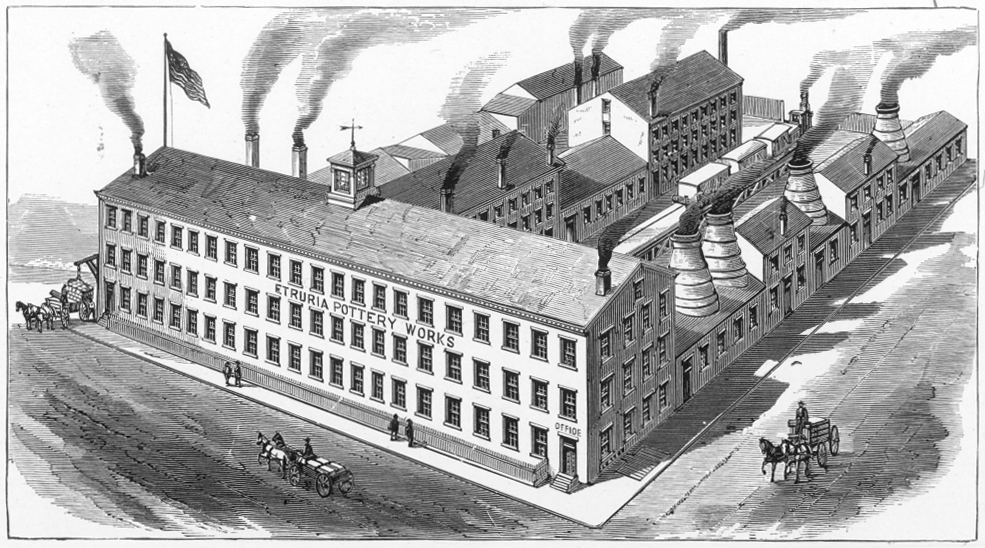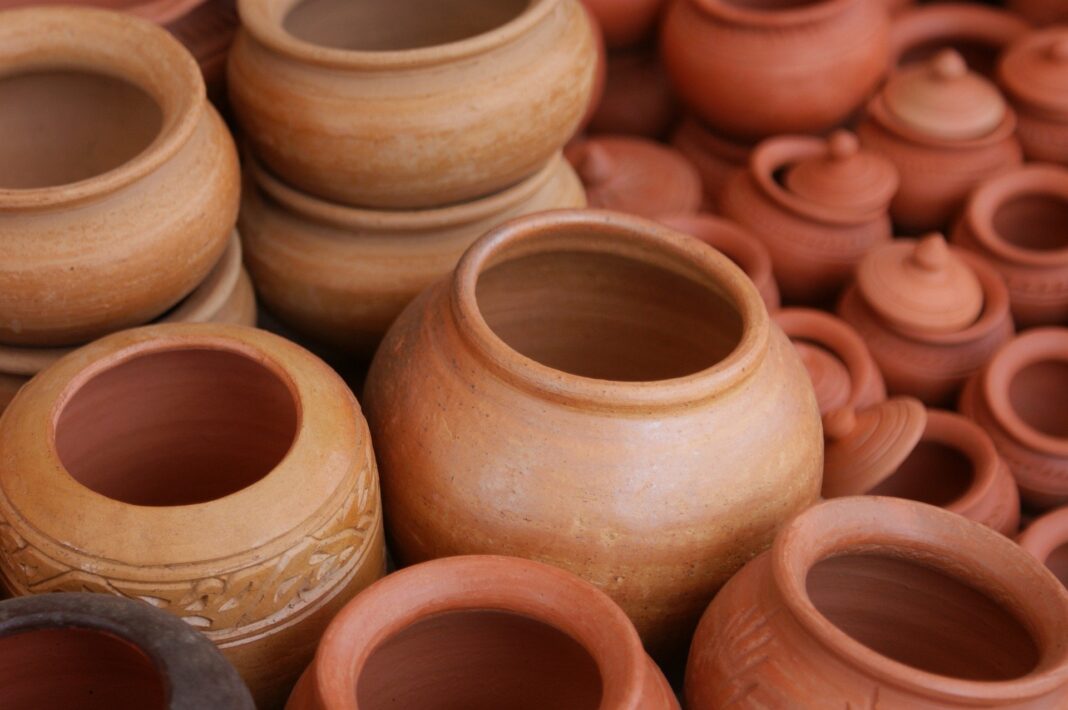Pottery has been an essential part of human life for eons. In fact, the first records of pottery being utilized go as far back as 29,000 BC. For millennia, humans have used pottery as tools, décor, and more, making it an integral part of day-to-day life. As demand for ceramics grew and the industry evolved, it rapidly expanded to one of America’s foremost exports. Pottery production was particularly prevalent in the Greater Philadelphia region following the Industrial Revolution and beyond. As a matter of fact, this region became known as “the Workshop of the World” due to its many major exports, particularly ceramics and pottery. Trenton was a major player in this ceramics boom, making the “Trenton Makes, the World Takes” motto known all throughout the globe.

The emergence of pottery as a significant industry in Trenton initially manifested in the nineteenth century. As technologies advanced and the process of creating pottery became more streamlined, ceramics producers were empowered to evolve from small-scale operations to full-blown manufacturers. With changes in industry came advanced in the scale these companies could work to, prompting many larger-scale manufacturers to move their operations to urban centers like Trenton. Areas like Trenton and surrounding regions were of particular interest to the pottery industry due to ease of access to both land and water transport routes. In addition to optimal transit options, Trenton was also particularly valuable due to its proximity to the natural resources necessary for ceramics production.
As the middle class consumer base continued to evolve, the demand for pottery and ceramics continued to increase. Prior to the 1850s, Trenton had a singular pottery firm ran by the McCully family. Trenton’s first major foray into the ceramics industry began in 1853, when two potteries, Taylor and Speeler and William Young & Co., opened their doors. These two firms marked the beginning of a new era for this industry, and within the decade, ten additional companies opened up operations right here in the Capital City. By the turn of the century, Trenton was home to almost 50 ceramics companies in total.

It is this very immensity of industry that has made the history of pottery in Trenton so difficult to surmise. Since the pottery industry was such a significant presence in Trenton during the nineteenth and twentieth centuries, records of this time period cannot fully encapsulate the vastness of this industry and its impact on the local economy. Thankfully, however, we do have access to a number of records that provide great insights to the peak of the ceramics industry in Trenton and beyond.
Trenton’s role in the pottery industry is truly historic in every sense of the word. For example, it was in Trenton that white graniteware was able to be produced on a mass scale. In doing so, this gave United States manufacturers a competitive edge over producers outside of the country, particularly those in England. This was a major contributor in how Trenton and the US pottery industry in general came to dominate the global market. Trenton was also the home of “Belleek” china, which was utilized to produce the highly popular and distinct art porcelain that the Irish Belleek works became known for.

The pottery manufacturers continued to thrive until the 1920s, when the industry encountered some significant roadblocks. As the Great Depression took its claim over the United States economy, many of Trenton’s pottery firms were forced to close their doors. These matters were further complicated by other factors including labor strikes, the onset of World War II, and more. The number of manufacturers plummeted to 30 during the Great Depression, and continued to fall to 18 by the end of World War II. Manufacturers continued to dwindle as the 20th century continued, and the city’s last remaining firms, Lenox and American Standard, ultimately moved their operations to surrounding suburbs.
Although the peak of Trenton ceramics has unfortunately come and gone, the legacy of the city’s ceramic wares continues to endure amongst glass enthusiasts all throughout the country and beyond. To this day, glass produced here in the Capital City is considered a fantastic find for antique shoppers, collectors, and more. The ceramics industry made a profound impact on Trenton’s economic development, and pottery is still one of Trenton’s most famed exports. As Trenton continues to evolve in the present era, may we look back at this industry with fondness, letting it serve as an inspiration for Trenton’s next great pursuit. The City of Trenton shattered expectations in the glass trade, and continues to be a shining example of the city’s industrial past.

SOURCES:
- https://ellarslie.org/collection/pottery/
- https://potteriesoftrentonsociety.org/a-brief-history-of-the-trenton-pottery-industry/
- http://www.capitalcentury.com/1923.html
- https://philadelphiaencyclopedia.org/essays/ceramics/
- https://deneenpottery.com/pottery/#:~:text=As%20one%20of%20the%20oldest,far%20back%20to%2029%2C000%20BC.





